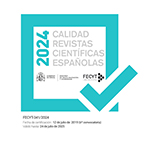L’eccezione dell’azzurro. Il lessico cromatico: fra scienza e società
Abstract
It was in the twentieth century that colour became a favoured subject of research in the realm of the debate between universalism and relativism. The interest in this topic, kindled by the famous Basic Color Terms by Berlin and Kay (1969), highlighted new possibilities of tracing universals in language, and also it showed the importance of an interdisciplinary approach in linguistic studies. A joint approach bringing together anthropology and vision sciences has proved to be extremely successful; however, there are still unresolved questions about colour one example is the categorization of the blue spectrum in Italian. In Italian, in fact, azzurro (light-blue) is considered a basic colour term and not part of the realm of blue. This is truly an exception with respect to the theories of chromatic categorization and it would remain inexplicable without investigating the history of colours and of the vocabulary used to describe them in the European context. The exception seems to depend mainly on historical reasons and on typological-areal tendencies. Philological analysis, combined with cultural and pragmatic considerations, will enable us to examine chromatic categorization in depth, for example the use of azzurro in Italian.Downloads
Article download
License
In order to support the global exchange of knowledge, the journal Cuadernos de Filología Italiana is allowing unrestricted access to its content as from its publication in this electronic edition, and as such it is an open-access journal. The originals published in this journal are the property of the Complutense University of Madrid and any reproduction thereof in full or in part must cite the source. All content is distributed under a Creative Commons Attribution 4.0 use and distribution licence (CC BY 4.0). This circumstance must be expressly stated in these terms where necessary. You can view the summary and the complete legal text of the licence.










